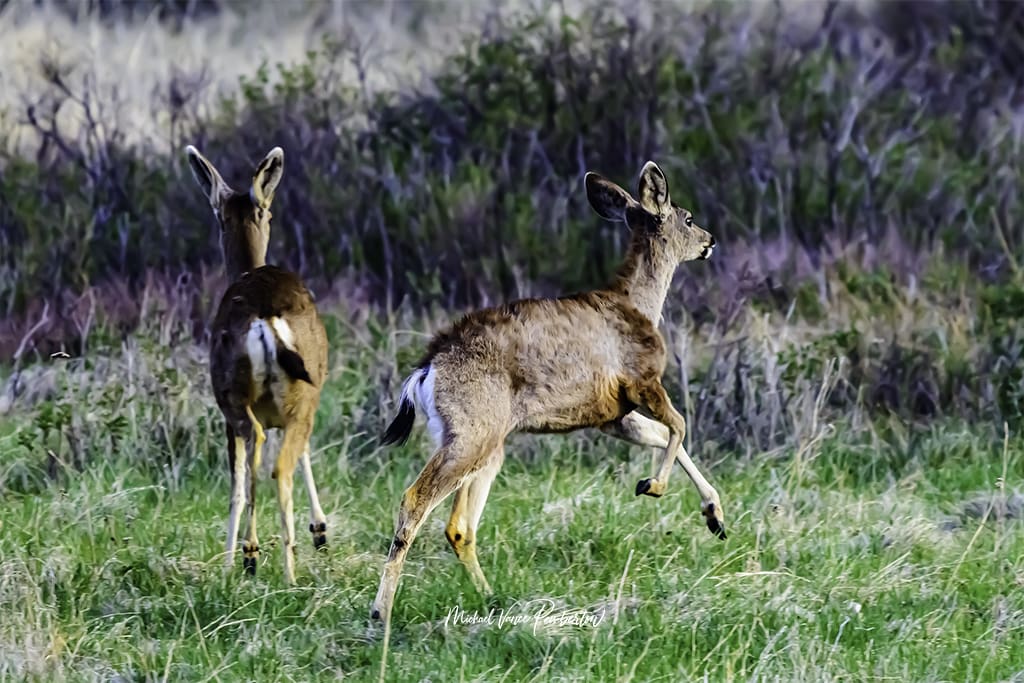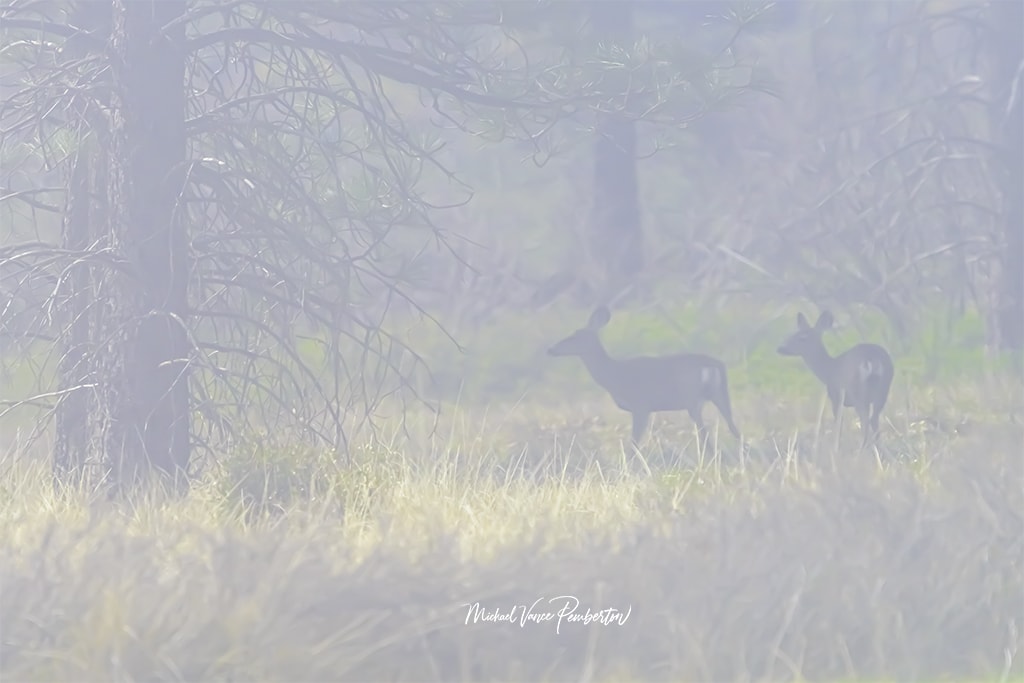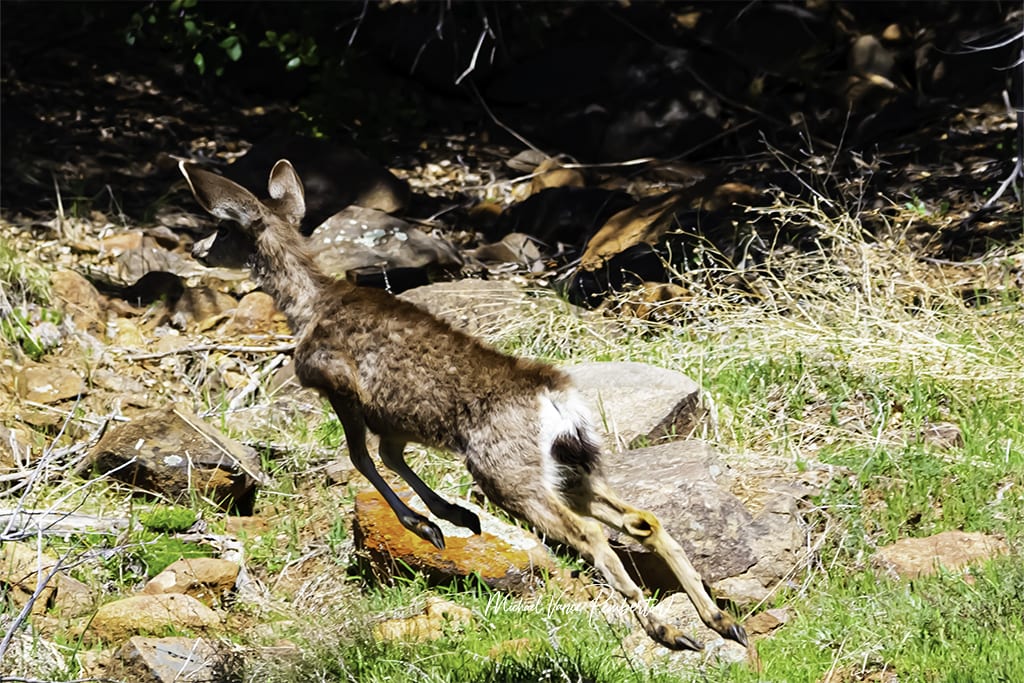
The coastal mule deer (Odocoileus hemionus columbianus) is a remarkable mule deer subspecies that thrives in North America’s unique and challenging coastal environments. This subspecies has adapted to the harsh conditions and diverse landscapes of the Pacific coastline, making it a fascinating subject for researchers and wildlife enthusiasts alike. This article will explore the ecology, behavior, and conservation of coastal mule deer, shedding light on their survival strategies and challenges.
Ecology and Distribution:
The coastal mule deer (Odocoileus hemionus columbianus) is a fascinating subspecies of mule deer that has survived and thrived in North America’s challenging coastal environments. As a part of the more prominent deer family, Cervidae, mule deer are characterized by their distinctively large, mule-like ears, giving them their name. The coastal mule deer exhibits a range of adaptations that allow it to exploit the diverse landscapes found along the western coast of North America, from northern California to southern Alaska.
One of the most remarkable aspects of coastal mule deer is their exceptional range, which spans thousands of miles along the Pacific coastline. Their distribution encompasses an array of habitats, reflecting their adaptability to various environmental conditions. From the lush temperate rainforests of the Pacific Northwest to the arid coastal scrublands of California and the mixed woodlands, these deer demonstrate their survival ability and sustenance in various ecosystems.
In the temperate rainforests, coastal mule deer navigate through dense vegetation and towering trees. They are adept at finding forage amidst the ferns, mosses, and underbrush, using their keen sense of smell and agile movements to maneuver through the dense undergrowth.
These rainforests receive abundant rainfall, and the deer have adapted to the damp conditions, displaying impressive resilience in prolonged periods of wet weather.
In contrast, the coastal scrublands pose different challenges for the mule deer. These areas are characterized by low-lying shrubs, sparse trees, and a more arid environment. Here, the deer rely on their browsing abilities to feed on various shrubs and other drought-resistant plants. With scarce water sources, they have evolved to obtain much hydration from the moisture in the plants they consume, minimizing their need for direct access to water.
Moving further north, the mixed woodlands present yet another set of conditions. The coastal mule deer demonstrate their versatility by thriving in this diverse habitat, where they encounter coniferous and deciduous trees and a mix of grasses and forbs. During the colder months, snow may cover the ground, posing additional challenges to their survival. However, the deer have evolved to withstand these harsh conditions, growing thicker winter coats and adapting their movement and foraging patterns accordingly.
Throughout their vast range, coastal mule deer engage in seasonal migrations, which play a pivotal role in their survival strategy. During the summer, they move to higher elevations for abundant forage, escaping the heat and finding refuge from biting insects. As autumn approaches, they undertake long-distance migrations back to lower elevations and closer to the coastline, where milder temperatures and access to food sources make for more favorable winter conditions. This migratory behavior helps them find sustenance throughout the year and maintains genetic diversity within their populations.
The coastal mule deer’s ability to adapt and thrive in such diverse and challenging coastal environments is a testament to the resilience and ingenuity of nature. Their range, spanning from northern California to southern Alaska, encompasses many habitats, including temperate rainforests, coastal scrublands, and mixed woodlands. Their adaptations, such as keen senses, browsing abilities, and seasonal migrations, have allowed them to overcome the challenges posed by each unique ecosystem. As stewards of the natural world, we must appreciate and protect these remarkable creatures to ensure their continued survival for generations to come.

Behavior and Adaptations:
Coastal mule deer have evolved a remarkable array of adaptations that allow them to thrive in their specific coastal environments. Their survival strategies are finely tuned to the challenges presented by their diverse habitats, ensuring their resilience in the face of changing seasons and environmental conditions.
Diet and Foraging:
A key factor contributing to the success of coastal mule deer is their diverse and flexible diet. They are primarily browsers, meaning they consume a wide variety of vegetation, including leaves, twigs, and woody plants. This adaptability enables them to exploit the resources available in their different habitats, from the lush vegetation of temperate rainforests to the sparse shrublands and woodlands.
During the summer months in their higher elevation ranges, they feed on various plants, including grasses, herbs, and tender shrubs. As winter approaches, they shift their focus to more woody plants and browse to cope with the decreased availability of tender vegetation. This dietary flexibility ensures they can sustain themselves throughout the year, even with fluctuating food availability.
Senses and Predation:
Coastal mule deer have evolved highly acute senses that are vital to their survival. Their keen sense of smell allows them to detect the presence of predators or potential dangers from a considerable distance. This heightened olfactory ability helps them remain vigilant, especially when traversing through dense vegetation with limited visual cues. Additionally, their excellent vision provides a wide field of view, making it easier to spot approaching predators or changes in their surroundings. This visual acuity is particularly beneficial during their migrations when navigating unfamiliar terrain and avoiding potential threats.
Seasonal Migrations:
One of the most remarkable behaviors of coastal mule deer is their seasonal migrations. These migrations involve significant journeys between their summer and winter ranges. As winter approaches and temperatures drop in higher elevation areas, the deer instinctively move towards lower elevations and coastal regions with milder weather and more abundant food resources. This movement is triggered by changes in day length and food availability, prompting them to undertake long-distance journeys in search of more favorable conditions.
These migrations are crucial for their survival and play a vital role in the broader ecosystem, as they help disperse seeds, control vegetation growth, and support predator-prey dynamics.
Adapting to Human Presence:
Coastal mule deer have also displayed a degree of adaptability to human presence and urbanization. They have learned to coexist with human activities in some areas, albeit with some challenges. They have been observed foraging on suburban landscapes and agricultural fields when natural food sources become limited. However, this adaptability has also exposed them to threats like vehicle collisions or conflicts with domestic animals.
As human development continues encroaching upon their habitats, it becomes essential to balance conserving their natural habitats and implementing measures to reduce potential conflicts.
The coastal mule deer’s range of adaptations, including their diverse diet, acute senses, and seasonal migrations, exemplifies their exceptional ability to survive in the challenging coastal environments of North America. These unique qualities have allowed them to flourish in various habitats, from temperate rainforests to coastal scrublands and mixed woodlands. However, as human activities continue to impact their habitats and migration corridors, we must prioritize conservation efforts to protect these majestic creatures and maintain the delicate ecological balance that sustains them. By understanding and respecting the complexities of their lives, we can ensure that future generations will also have the privilege of witnessing the survival and grace of the coastal mule deer.

Challenges and Conservation:
Despite their incredible adaptability, the coastal mule deer faces many challenges threatening its long-term survival. Chief among these challenges is the loss and fragmentation of their natural habitats due to human activities. Urban development, logging, and agriculture have encroached upon their traditional ranges, leading to the destruction of vital habitats and the division of once contiguous landscapes. As a result, the natural migration corridors that coastal mule deer rely upon to move between their seasonal ranges are disrupted, hindering their ability to find suitable food and shelter throughout the year.
The fragmentation of their habitats also poses risks to the genetic diversity of coastal mule deer populations. As specific populations become isolated, their gene pools become more restricted, reducing genetic variation and making them more susceptible to the impacts of disease, environmental changes, and other stressors. This decreased genetic diversity can compromise the overall health and resilience of the species, making it less capable of adapting to future challenges, such as climate change.
In addition to habitat loss and fragmentation, coastal mule deer frequently encounter hazardous situations due to human activities. Vehicle collisions are a leading cause of mortality for deer in many coastal areas, especially where roads intersect with migration routes. The deer’s seasonal movements, often spanning great distances, put them at a heightened risk of being struck by vehicles, particularly during increased migration.
Human-wildlife conflicts also arise when coastal mule deer venture into urban areas for food. As their natural habitats diminish, these deer may be forced to forage on suburban landscapes and agricultural fields close to human settlements. In urban environments, they face threats from traffic, predation by domestic animals like dogs, and exposure to novel and potentially harmful substances.
Conservation efforts are of utmost importance to safeguard the future of coastal mule deer populations. One of the key strategies is the establishment of wildlife corridors and underpasses that enable safe migration between their seasonal ranges. These corridors allow the deer to traverse highways and other barriers without colliding with vehicles. Promoting connectivity between different populations, these corridors also help maintain gene flow and genetic diversity among coastal mule deer.
Furthermore, effective land-use planning and habitat protection are essential to preserve suitable habitats for coastal mule deer. By designating and preserving critical areas for the deer to inhabit, such as migration routes and breeding grounds, we can mitigate the impact of human activities on their populations. This involves collaboration between government agencies, conservation organizations, and local communities to balance development and wildlife conservation.
Public awareness and education are also crucial components of conservation efforts. By raising awareness about protecting coastal mule deer and other wildlife, communities can actively safeguard their habitats and reduce human-wildlife conflicts.
The remarkable adaptability of coastal mule deer does not exempt them from the threats posed by habitat loss, fragmentation, and conflicts with human activities. To secure their long-term survival, we must prioritize conservation efforts that preserve their habitats, promote connectivity, and minimize human-wildlife conflicts. By taking action now, we can ensure that future generations will continue to marvel at the beauty and resilience of the coastal mule deer in the diverse and fragile ecosystems they call home.
Conclusion:
Coastal mule deer are a testament to the adaptability and resilience of wildlife in the face of changing environments. Their ability to thrive in the unique coastal ecosystems is awe-inspiring, yet they face significant challenges due to human activities and habitat fragmentation. Through conservation efforts, scientific research, and public awareness, we can protect these magnificent creatures and ensure that they continue to roam the coastal regions of North America for generations to come. Our responsibility is to safeguard their habitat and ensure that the coastal mule deer remain the survivors of the edge.


Recent Posts
In shadows cast by love's deceitful guise,He wandered blind, his heart the captive prize.Through realms unknown, where truth remained concealed,He followed trails of falsehood, unrevealed. Blinded...
Prepare to be amazed as the MCAS Cherry Point Air Show returns on May 11-12. This annual event, hosted by the Marine Corps Air Station (MCAS) Cherry Point in North Carolina, promises a weekend of...